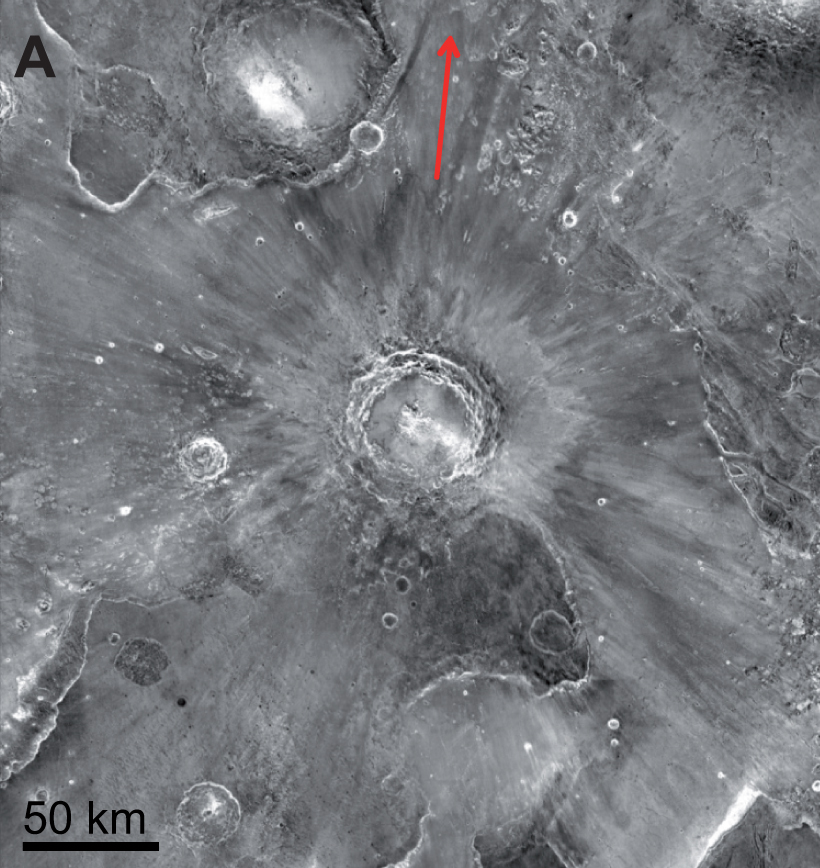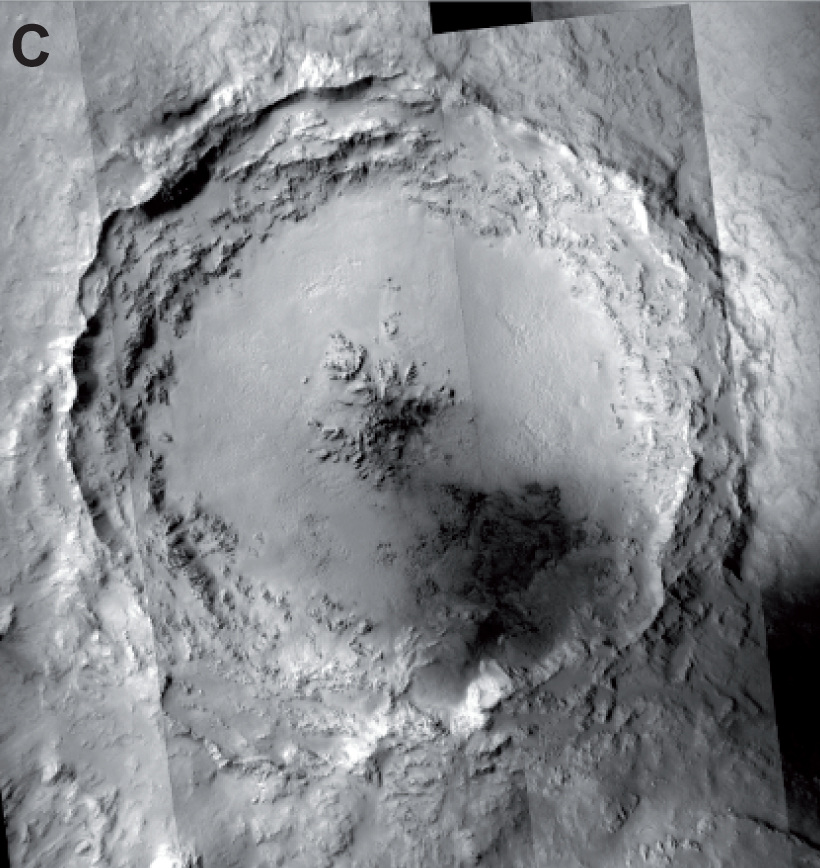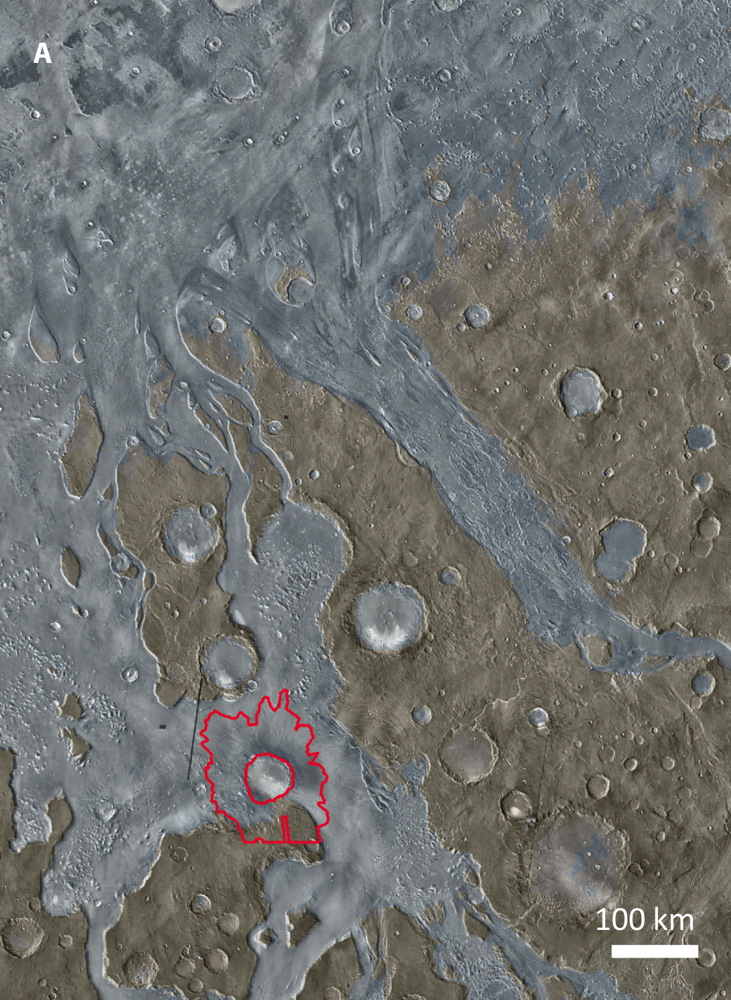Big Mars Impact Gave Earth Most of Its Martian Meteorites

A huge meteorite impact on Mars five million years ago blasted toward Earth many of the rocks that scientists scrutinize to learn more about the Red Planet, a new study reveals.
The cosmic crash left a 34-mile-wide (55 kilometers) gouge on Mars called Mojave Crater and is the source of all "shergottite" or igneous rock Martian meteorites found on Earth, researchers say. Examining the crater and the meteorites also led to new revelations about how old the rocks are.
"We tried to find good arguments to convince ourselves that [Mojave Crater] was five million years or younger. You don’t expect this size of crater so recently formed, statistically at least," lead author Stephanie Werner, a planetary scientist at the University of Oslo in Norway, told Space.com. [Mars Meteorites: Red Planet Pieces on Earth (Photos)]
Werner's team first used a technique called crater counting, which estimates a region's age by seeing how many large and small craters are in a particular zone. The more large craters, the older the terrain likely is.
Through their detective work, Werner said, they found the crater is indeed about five million years old. The material blasted from Mojave Crater had fewer meteorite strikes than the surrounding channel floor.
Age dispute

Mineral studies of Mojave Crater using NASA's Mars Reconnaissance Orbiter and the European Space Agency's Mars Express orbiter revealed a good match with shergottites, as both the meteorites and the crater had pyroxene minerals in similar abundances.
Get the Space.com Newsletter
Breaking space news, the latest updates on rocket launches, skywatching events and more!
The find, however, yielded an age mystery. Shergottites (which make up about 75 percent of Mars meteorites found on Earth) appear to be youngsters despite their origins. While a plateau around Mojave Crater is 4.3 billion years old, shergottites were believed to have crystallized (or solidified) between about 150 million years ago and 600 million years ago. Reconciling the difference was Werner's team's next step.
The study suggests scientists underestimated the shergottites' crystallization age because the rocks were "reset" by melting events. Meteorite impacts, tectonic activity and volcanic eruptions could do this, researchers said. Once the rock is broken up with heat or geochemical processes, when it is reformed it would appear much younger than it actually is.
So the shergottites are probably around 4.3 billion years old, Werner said, adding that this conclusion is the most "provocative" part of the study.
"It will be quite interesting to see how that will be discussed in the future," she said.


The region could bear more study, Werner added, as there are channels around Mojave Crater that suggest the presence of water. There were two different geological episodes, one less then five million years ago, the other probably more than 3.3 billion years old.
"It would be very interesting to see how [the impact] would fit with the consideration of lifeforms very early on Mars," Werner said, adding that it's unclear whether a space rock impact in the water-rich area would destroy or boost the chances of life on Mars.
More generally, Werner and her colleagues are looking to enhance dating techniques on Mars by comparing crater counts to mineralogical data gleaned from orbit, and up-close measurements from NASA's Curiosity and Opportunity rovers on the surface.
The researchers plan to look for more source craters for Martian meteorites, and to keep their fingers crossed for a future sample-return mission that would see part of the Red Planet's surface sent to Earth for better analysis.
The new study was published today (March 6) in the journal Science.
Follow Elizabeth Howell @howellspace, or Space.com @Spacedotcom. We're also on Facebook and Google+. Original article on Space.com.
Join our Space Forums to keep talking space on the latest missions, night sky and more! And if you have a news tip, correction or comment, let us know at: community@space.com.

Elizabeth Howell (she/her), Ph.D., was a staff writer in the spaceflight channel between 2022 and 2024 specializing in Canadian space news. She was contributing writer for Space.com for 10 years from 2012 to 2024. Elizabeth's reporting includes multiple exclusives with the White House, leading world coverage about a lost-and-found space tomato on the International Space Station, witnessing five human spaceflight launches on two continents, flying parabolic, working inside a spacesuit, and participating in a simulated Mars mission. Her latest book, "Why Am I Taller?" (ECW Press, 2022) is co-written with astronaut Dave Williams.









